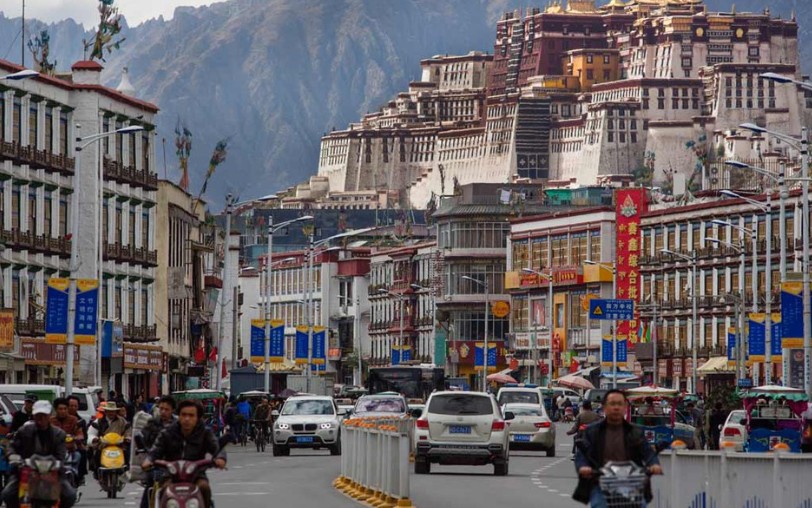During a government meeting on urbanization this week, the administration of Tibet stated their decision to increase the permanent urban population of Tibet by 30 percent by 2020 — a figure that represents roughly 280,000 new Chinese immigrants to Tibet.
The urban population of Tibet has risen dramatically since the 1980s, when China launched a “National Strategic Project to Develop the West” following the end of the Cultural Revolution.
Before the campaign, under 300,000 people lived in 31 towns and cities in Tibet. According to Chinese estimates for 2013, over 740,000 people now live in 140 towns and cities in Tibet. The new push will bring that number to over one million.
Because the majority of new residents in Tibet are ethnic Chinese, many Tibetans have expressed concern about a threat to their distinct cultural, religious and national identity. The Chinese population has increased in all Tibetan regions since China invaded Tibet in 1959.
In the administrative capital of the Tibetan Autonomous Region, Lhasa, Chinese outnumber Tibetans three to one, while in 1990 there were only 81,200 Chinese in all of TAR.
In addition to the Chinese resident population measured in government figures, there are also an additional 300,000 to 500,000 (150,000 to 250,000 in TAR) ethnic Chinese stationed in Tibet as cadres, administrative staff, and ordinary and military police.
The chairman of the Tibetan regional government, Losang Jamcan, said at the meeting that Tibet still lagged behind many regions of China, and that urbanization especially was lagging behind the rest of China.
Losang said that Tibet wanted to improve public services in urban areas in order to attract more people to move to Tibet, and to boost local economies.
Analysis by James Haleavy

All Chinese have the right to migrate where they want in China, including Tibetan region.
I’m more curious about India’s suppression of Khalistan, Kirats in the Northeast, Dravidians in South India, Portuguese Goa, and Naxalites in Central India.
Recently while reading historical British imperial gazette documents I realized that the Bhutan king has a legitimate suzerainty over Tibet. I think the indian law ministry should study the old files. The Chinese are lying through their nanchakus when they claim ownership of Tibet.
Even better, the mongols should stake claim on all lands up to the Great Wall. Wasn’t that the official boundary since ancient times?